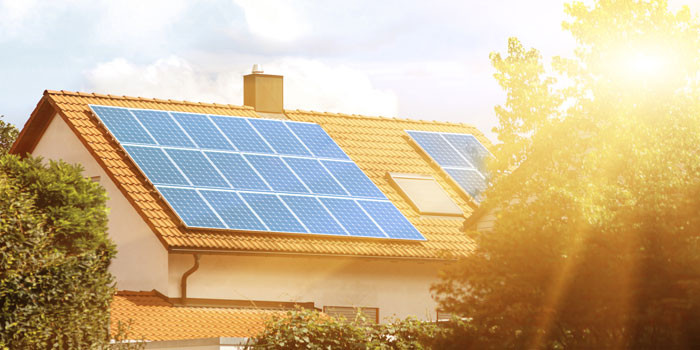Energy Saving Concepts


SPRAY FOAM MAGAZINE – Show Issue 2021 – At the beginning of 2020 I answered a knock at my door, here in Florida, to be greeted by a salesman going door to door through our neighborhood. He immediately began pitching me on the new solar program that their company was offering in the area. He started by telling me about residential energy savings, energy audits, and saving money with solar panels, most of which I already knew about, but he did not know that because he never asked me any questions, so I humored him and let him talk. I asked him a couple of obvious questions but all I could think about was what a terrible sales job this guy was doing and what an awful sales process this company was using.
Thinking back on this situation makes me want to talk about what a sales process should look like and how energy-focused companies, like solar contractors and spray foam contractors, can supercharge their sales and close more business, but that is not what this article is about.
This article is not about creating a great sales process, but it is about what I found after that first fateful conversation, when I started researching solar panels in more depth. You see, as a 15-plus year veteran in the spray foam insulation industry, I am familiar with energy savings concepts and I have worked on projects that used solar panels to create Net Zero Energy buildings; but alas I had not done much to consider the benefits of using solar myself. For some reason, most likely the expectation of the high upfront cost, in the back of my mind I figured solar panels were for the “rich and wealthy” that could pay for the installation out of pocket, and while this may be true to some extent, it is not the whole truth.
I found a whole new world and realized that I knew little about what was available in the solar panel market, including:
- • Programs that would finance the cost of the panels
- • Turn-key providers that would do all the work for you
- • Wholesalers that offered Do-It-Yourself tutorials
- • Federal tax incentives to help offset the cost
- • A wide array of ROIs
The salesman that started me on this journey made me an offer, zero dollars upfront and we pay $140 per month, our average electric bill, to their finance company…for the next 25 years. He works for a turn-key installer that does everything for you and the cost of their proposal was approximately $32,000 - even though it would not cost me anything out of pocket upfront, it would have cost me more than $40,000 over time. While it was interesting, I thought there had to be a better way.
I connected with some of my network, put together a bill of materials, discovered I could buy all the materials for less than $10,000 and found dozens of DIY videos and PDFs. Yes, it would take me longer to install the solar panel system myself, but the direct payback period would be less than six years this way, and after the federal tax credit, the payback period would be less than five years, and the overall ROI of the project would be greater than 20% - that’s pretty good. I didn’t just have a spare $10,000 sitting around waiting to be spent, but I had a line of credit that I could use to pay for the system and get the same effect as putting no money down, so this is what I did.
If you or your customers want to work toward the Net Zero Energy path the most direct formula is to reduce and then produce, and there is a clear connection between spray foam insulation and solar panels. The first step is to reduce the building’s energy consumption, and of course, that is one of the primary benefits and value propositions of spray foam. Once the energy consumption is minimized, then the second step to achieve Net Zero Energy is to produce energy yourself, and this is where an optimum sized solar panel array fits into the picture. And great news, this process works for both residential and commercial buildings.
As mentioned previously, there are federal tax credits for solar projects, both residential and commercial. For solar projects that are completed and producing power by the end of 2021, there is a 22% federal tax credit available, and after 2021, the residential credit expires, unless renewed by Congress, and the credit for commercial projects moving forward drops to 10%, so you are running out of time to take action with this information.
With this knowledge, and a good network in your local market, you are no longer “just an insulation guy,” you can become an Energy Consultant showing your clients options to save energy and make their own energy.
Direct any questions you have about statements made in this article to Robert Naini: 817-983-3544 robert@sprayfoamadvisor.com
About the Author: Robert Naini has a Bachelor’s of Science in Mechanical Engineering and an MBA from the University of Texas in Arlington. With more than a decade of experience on the cutting edge of spray foam insulation, Robert has created Spray Foam Advisor to offer web-based training and education, with videos, articles, blogs and more, to help you get better.
*Spray Foam Magazine does not take editorial positions on particular issues; individual contributions to the magazine express the opinions of discrete authors unless explicitly labeled or otherwise stated. The inclusion of a particular piece in the magazine does not mean that individual staff members or editors concur with the editorial positions represented therein.
Disqus website name not provided.




































